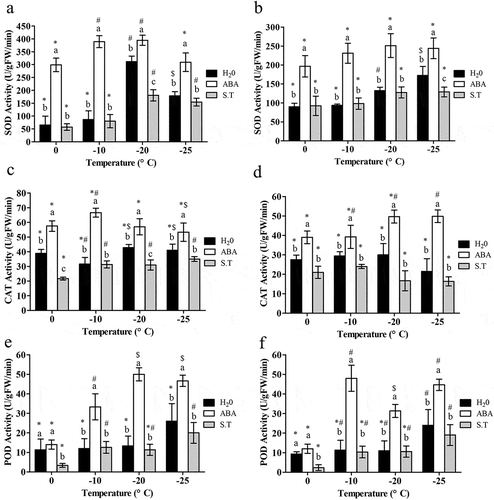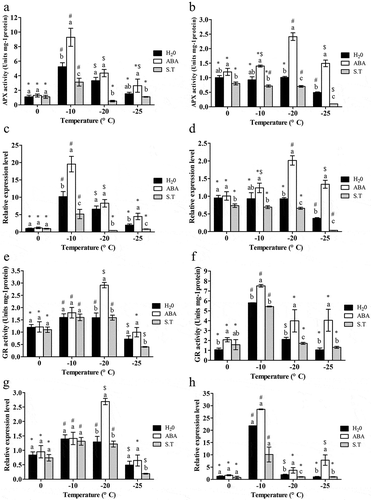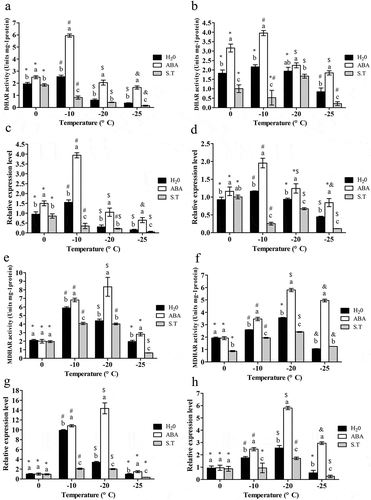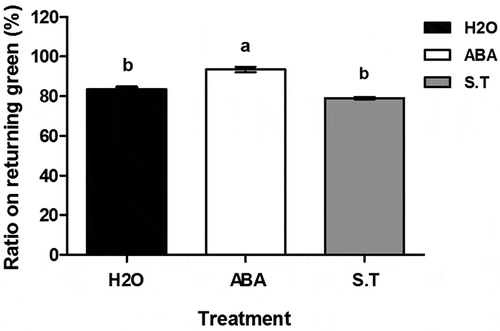Figures & data
Table 1. Primers for Real-Time RT-PCR* analysis.
Figure 1. Effect of exogenous ABA on H2O2 content and relative electrical conductivity of the ‘dn1ʹ variety.

Figure 2. Effect of exogenous ABA on activities of antioxidants of the ‘dn1ʹ variety.

Figure 3. Effect of exogenous ABA on contents of antioxidants of the ‘dn1ʹ variety.

Figure 4. Effect of exogenous ABA on APX and GR activity and TaAPXand TaGRexpression of the ‘dn1ʹ variety.

Figure 5. Effect of exogenous ABA on DHAR and MDHAR activity and TaDHAR and TaMDHARexpression of the ‘dn1ʹ variety.

Table 2. Correlations of different gene expression in the AsA-GSH cycle.
Data availability statement
All data generated or analyzed during this study are available upon request by contact with the corresponding author .

